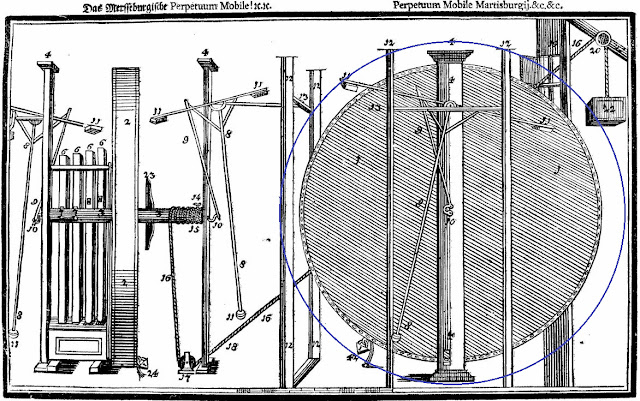The opinion that perpetual motion (PM) and Bessler’s wheel are impossible is so well established under the heading, ‘ science’ that it is incapable of change, modification or dismissal, because it has been accepted for more than three hundred years. The birth of ‘science’ was the eventual and inevitable response to religion and the priesthoods and those charlatans that spouted ‘faith’ as the answer to everything, and it replaced it with testable and shareable facts. Science provides a framework to organise observations which can be referenced and confirmed by other ‘scientists’.
Using inductive reasoning leads to the creation of theories which can be tested and if reproducible can form a basis for further theorising, but sometimes a wall is encountered which seems to bring progress to a halt. This leads to the assumption among established ‘scientists’ that all the facts are known and it is time to move on. But among younger-minded thinkers such stale opinions are open to reinterpretation, they seek a paradigm shift. I use the term ‘younger-minded thinkers’ to describe those who do not accept the tried and tested opinions that were drummed into them in their formative years, they seek innovative, imaginative solutions which weren’t available at the time the old indurate opinions were established.
The method used to acquire knowledge by observation, the empirical method, has been in use for a lot longer than three hundred years, and often we may observe some action without knowing the how or why of it. Bessler’s wheel was observed, tested and thoroughly examined. Rigorous scepticism about the tests was applied, but also note was taken of the opinion of the one man, a person of the greatest integrity, who insisted on being permitted to observe the interior of the wheel in action before agreeing to sponsor the inventor, Johann Bessler.
In today’s world scientists would demand information about how the wheel worked, but they would either have sign an NDA or the inventor would apply for a patent, (or give the solution away), but Bessler had no option other than demand the money after the machine had been subjected to the scientific method, empirical testing, observation and the respected declaration of an honest, knowledgeable man.
Some people say that the publication of the solution to Bessler’s wheel will result in a paradigm shift in what we know about gravity. Is gravity a conservative force? Yes of course it is, but that isn’t actually relevant. Gravity makes things fall, but it can’t make them rise again, it’s a one way force. Work done by gravity depends on the initial and final positions, regardless of the path taken. If the starting and ending positions are the same, as in a circular path, the net work done is zero.
Obviously Johann Bessler told the truth when he said that the weights were literally the actual PM which caused the wheel to turn, but if gravity is conservative, how is this possible? It isn’t gravity that makes the wheel turn, it’s the weights. Gravity enables the wheel to turn but it is the action of the falling weights which makes it turn. Bessler provided the information that the weights were the PM, but it was dismissed or ignored, but actually what he said was correct.
This whole view of gravity-enabled non-stop rotation was ignored, sidelined or scorned just because no one had ever managed to design a mechanism which could do what Bessler’s did. It was never impossible, just never achieved, no proof of either outcome before Bessler. But the fact that no one had ever produced a working PM wheel in the whole of the history of mankind, was sufficient evidence, so it was believed, to assume it was indeed impossible.
But look at the evidence; Bessler’s wheel passed every test designed to prove or disprove the inventor’s claims. A man of unimpeachable reputation validated it. Bessler was never found to be cheating and died still maintaining his claim to have built not one, but several PM machines. So there is no evidence that it is impossible, just faith in the ‘scientists’ who repeat by rote, ‘it is impossible because gravity is a conservative force’.
It’s been said many times but it is nevertheless true - science is the new religion.
JC







